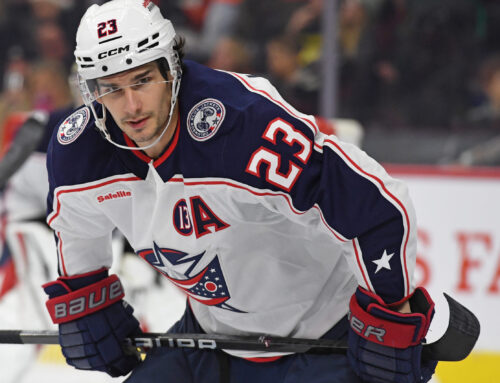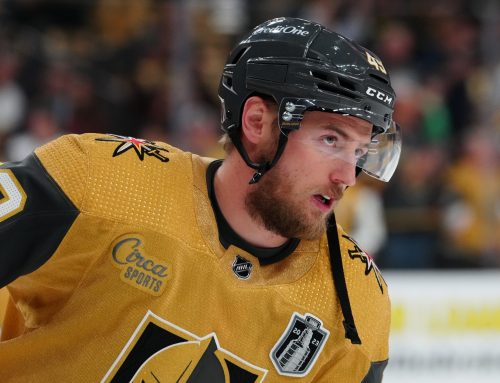By the time this is posted we will be on game day for the 2022-23 season. What a time to be alive. Season kickoff, as usual, means prediction from your fearless panel of writers here at Dobber Hockey. For the full list check out the article here, but for the purposes of today's article we are going to use the consensus picks as a way to chat about players we normally don't get to here on Frozen Tool Forensics. The consensus picks are players everyone already knows are good, so we don't really ever dive into their production. For just one day though, we will.
The process this week is fairly simple. We have the consensus picks from the article above and we will be using the player profile pages to dig into their numbers and see why these players are the consensus pick for their respective category.
First up: The list.
Hart: Connor McDavid
Art Ross: Connor McDavid
Rocket Richard: Auston Matthews
Norris: Cale Makar
Vezina: Igor Shesterkin
Calder: Matty Beniers
Rebound: Dougie Hamilton
Disappoint: Chris Kreider/Alexandar Georgiev
Quick caveat on this list: I am going to focus on skaters, so won't get into goalies here. I am also not a prospects expert so am going to let others focus on Matty Beniers, though I will say he certainly created a bit of hype for himself with his ten-game audition last season. It does remain to be seen whether that will translate to a full season though.
The Hart is a subjective award that is supposed to take into account value to the player's team, which is hard to quantity and doesn't translate into any specific fantasy category. Art Ross though definitely does. Points matter quite a lot. In 2021-22 McDavid broke the 120-point pace mark for the fourth consecutive year. He has also won the award four of the last six years. It is safe to say that the context is McDavid versus the field and it will take an extraordinary year from someone or a down year from McDavid for someone to take the Art Ross trophy from him.
I do want to dig into last season just for a moment. His 123 points (over 80 games) was the highest total of his career though not his highest point pace (it was his second highest). It was a decrease from the madness that was his 2020-21 season where he put up 105 points in 56 games (154-point full season pace). The important point to consider here is that this impressive 123 points and 126-point pace came with an increase in expected goals over 2021-22 (his career high 154-point pace season) and the highest shot rate of his career. The reason his point pace wasn't higher is due to his lowest personal shooting percentage since 2016-17, the lowest team five on five shooting percentage of his career, his lowest PDO since 2015-16, and the lowest power-play point per game rate since 2018-19. All with reasonable and sustainable time on ice. Basically, his statistically best (in total points), Art Ross winning season, was kind of a down year for him. The sky seems to be the limit for McDavid (can you just imagine for a moment what his total would be if he went on a shooting bender a la Chris Kreider?). If our criteria for being able to repeat as Art Ross winner is an ability to repeat last season's results, McDavid has an excellent shot at doing so.
Because this is the Rocket Richard Trophy, we are of course going to focus on goal scoring. Matthews has been trending up in goals per game since… well since he started in the league. In 2021-22 he put up .82 goals per game and ended up with a total of 60 goals in 73 games. In a full season that is 67 goals. He did it with a very reasonable (for him) 17 percent shooting percentage, and a career high shots per game rate. The only sort of anomaly for Matthews was an increase in power-play goals per game. It didn't correlate with an increase in power-play time on ice so he was either being more efficient with his power-play time, or shooting more on the power play. It turns out it is a little bit of both. His power-play shot rate per game increased, as did his power-play shooting percentage (over his recent career averages). Interestingly though his overall shooting percentage and his power-play IPP are completely in line with average, so it isn't like the change resulted in an unsustainable overall goal total.
Everything looks really good for Matthews and if he can stay healthy a 70 (!) goal season is definitely a possibility. Like with McDavid if our criteria here is being able to repeat an award-winning season, Matthews certainly seems poised to do so.
Makar had career high time on ice, shot rates, and an increase in expected goals to go along with career highs in points, point pace, power-play points, and shots. The one area that was a bit high for Makar was his personal shooting percentage. His prior two seasons he was about an eight and then a ten percent shooter, while in 2021-22 he was up to almost 12. Now that certainly isn't a huge number increase, but it does bear watching in 2022-23. Interestingly while his own shooting percentage was up a bit, his team five-on-five shooting percentage was down, meaning that at least at even strength players were scoring a little less often while he was on the ice than usual. Overall though Makar put up a 92-point pace on his way to the Norris Trophy and by and large that pace seemed sustainable. While that award doesn't necessarily go to the highest scoring defensemen it is hard to argue that Makar isn't the front runner given that a 90-point pace is still potentially in the cards.
Hamilton's 2021-22 point pace (40) was his lowest since 18-19 (39), and you have to go all the way back to 2013-14 to find a season that was significantly lower. His season was hampered first by injury and then odd deployment on his return. 2021-22 was his lowest deployment (both total ice time, and power-play time) since that 2018-19 season. His personal shooting percentage and his IPP were the lowest of his career. Basically once he was back he wasn't getting top unit deployment, nothing he was shooting was going in, and he couldn't catch a break on getting in on his teammates' production. A bunch of that is bound to regress in the right way (personal shooting percentage, and IPP in particular). He was shooting at the same rate as usual and his expected goal numbers were on par with previously productive seasons so it isn't like there weren't opportunities for him. The biggest question is whether or not he is going to get that top power-play unit back. He has lined up on units with Jack Hughes in the preseason and it is hard to imagine him not getting that spot this season. Overall, I think this is a great bet to rebound, but definitely watch those power-play lines.
We have touched on Kreider multiple times already last season and this offseason. This seems a pretty safe bet to me if we are saying disappointment compared to last season's production. The wrinkle in this conversation is that I haven't really heard anyone say that they are expecting last season's production to continue. I don't have a ton else to add to the conversation, but I will just say that while Kreider's overall 20 percent shooting percentage is definitely too high, he did shoot at 19.6 percent in 2020-21 so it may not be as ridiculous as it seems. In addition, Kreider shot 3.2 times per game on average, whereas his previous high was 2.5. So yes, Kreider scored too many power-play goals (shooting almost 40 percent versus his recent career average of closer to 23 percent), and no one is really expecting that to continue, but he did shoot a little under his recent career average at even strength. So 52 goals? No, definitely not. But 35? 40? That’s a definite maybe. Would those numbers be a disappointment? I am not so sure.
That is all for this week. Do your part to support organizations working to make hockey for everyone.





 FLA
FLA CHI
CHI NYR
NYR PIT
PIT L.A
L.A COL
COL UTA
UTA BOS
BOS BUF
BUF SEA
SEA NYI
NYI VAN
VAN DET
DET MIN
MIN
